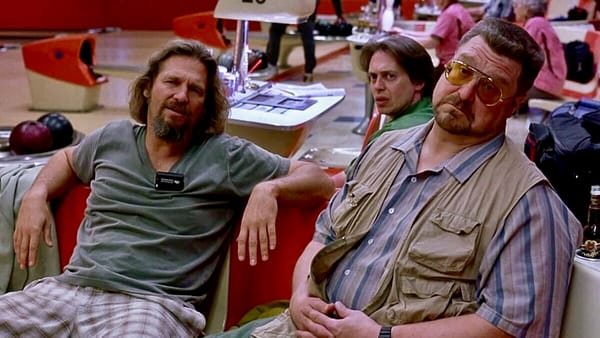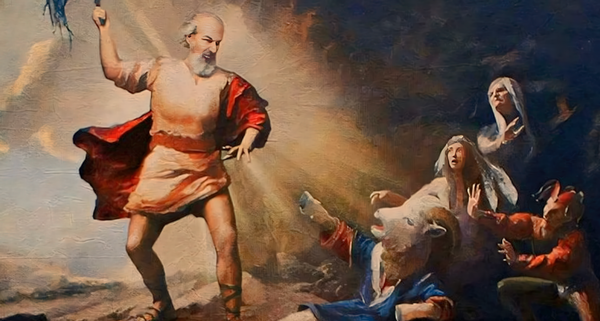Hegelian Analysis of Thorogood's “Bad to the Bone”

In this brief foray into the deeper philosophical underpinnings of George Thorogood’s “Bad to the Bone,” we turn to a panoply of classical thinkers. From Hegel’s dialectic to Kant’s categorical imperative, from Schopenhauer’s world as representation to Hume’s skepticism about induction, we will see how Thorogood—and the whimsical persona he creates—may (or may not) embody the spirit of these philosophical giants. Naturally, we should not take Thorogood’s lyrics too literally; indeed, the text itself practically invites a spirited yet unorthodox reading.
The Thesis: Birth of the WHI (World Historical Individual)
Thorogood opens with an image of his birth: “On the day I was born, the nurses all gathered ’round.” By portraying himself as someone whose arrival merits an audience of anxious medical professionals, he channels the grandeur of a Hegelian world historical individual (WHI)—a figure destined to shape the course of culture and history.
The Memory Problem
Of course, there is the pesky issue that newborns typically lack long-term episodic memory, a point thoroughly supported by modern neuroscience. Indeed, even Plato, in his Meno and Phaedo, mused on the nature of recollection, suggesting that true knowledge may be drawn from innate ideas rather than sense experience. However, Plato’s Theory of Recollection usually doesn’t apply to mundane events like the number of nurses in the room—so we might suspect a bit of poetic license here. But let us not quibble: for the sake of the argument, we can grant Thorogood the rhetorical flourish.
Hint of Kant
Thorogood then says, “The head nurse spoke up, and she said leave this one alone.” Read through the lens of Kant’s Metaphysics of Morals, the nurse is treating the newborn with moral regard as an autonomous being—a tiny, mewling subject whose freedom and rational will (though still in formation) demand respect. The nurse declines to interfere with the child’s possibly momentous destiny, thereby exhibiting the spirit of the categorical imperative: never treat a WHI merely as a means but always also as an end in itself.
The Antithesis: Breaking Hearts and Breaking Ideals
We next find Thorogood boasting that he has “broken a thousand hearts” and plans to “break a thousand more.” This posture is diametrically opposed to Kantian moral restraint—nothing says “ends in themselves” like shameless heartbreak. In fact, it hints at Schopenhauer’s notion of the world as Will and Representation: hearts (and perhaps heartbreak) are objects filtered through one’s subjective experience. If “hearts” are mere representations—endless illusions conjured by the Will—then breaking them might well be a commentary on the fleeting nature of objectified desire.
Yet we confront a clear tension: the moral deference the nurse showed in the thesis now squares off against the destructive, unstoppable Will. One might see in this clash the straightforward structure of Hegel’s dialectic: the universal recognition of rational agency (Kant) gives way to raw, uncontrollable desire (Schopenhauer). The question is whether these heartbreaks are illusions—figments of the Will—or genuinely inflicted moral injuries. Either way, the result is the same: an impressive (though ethically dubious) tally of shattered souls.
The Synthesis: Induction, Hume, and the Pursuit of “Badness”
In the final section, Thorogood boasts that he can make “a rich woman beg” and “a good woman steal,” appealing to inductive reasoning: because he has successfully turned so many women “bad,” he might well turn any woman similarly “bad” in the future. Here enters David Hume with his classic problem of induction. Thorogood’s claim hinges on the belief that repeated past experiences (people becoming “bad” around him) can predict future outcomes. But Hume famously warns us that induction, while psychologically compelling, lacks ironclad rational justification. Just because something has happened a thousand times does not guarantee it will happen again—especially, one might add, if one is counting hearts broken or squeals emitted.
A Betrayal of Kantian Principles?
There is an additional irony: in order to prove he is indeed “bad to the bone,” Thorogood resorts to a method—induction—that is itself arguably contradictory to Kant’s more universal, necessity-based categorical imperative. Instead of respecting autonomy, Thorogood boasts of causing others to behave unethically (making a good woman steal). Kant might frown upon such manipulative antics, which turn persons into means toward Thorogood’s end of self-aggrandizement. As the lyrics crescendo, the tension between the moral respect demanded by Kant and the wanton havoc championed by Schopenhauer’s Will is left unresolved.
Conclusion: The Fate of the WHI
In the grand Hegelian scheme, we might expect a neat resolution—synthesis—where these opposing forces (Kantian morality vs. the unstoppable Will) merge into a loftier concept. Yet Thorogood’s text seems content to leave the resolution ambiguous. He proclaims his enduring “badness” but does not conclusively prove it through universal rational principles. The very use of induction subverts the moral stance laid out by the nurse at his birth, implying that no single system of thought can fully reconcile the unstoppable, destructive Will with the moral autonomy of persons.
Verdict? Thorogood’s “Bad to the Bone” beckons us to explore free will, memory, moral duty, illusions, and induction—all in under four minutes of foot-stomping blues-rock. Whether he deserves the label of a true Hegelian World Historical Individual remains in doubt. But his attempt to fuse multiple philosophical themes into a raucous declaration of self is, in its own way, suitably grandiose. Hegel, Schopenhauer, Kant, and Hume might all raise a quizzical brow—but who can truly resist the swaggering magnetism of a self-proclaimed “bad” protagonist?
Thus, while Thorogood may never conclusively prove that he is “bad to the bone,” his lyrical flourish and philosophical pretenses might suffice to earn him an honorable mention in the pantheon of whimsical philosophical speculation—if only for his brash enthusiasm in melding the Sublime and the Ridiculous into one bluesy anthem.
Final Assessment
1. Hegelian Framework: Thorogood loosely follows the thesis–antithesis–synthesis trajectory, but the final resolution is more an allusion to Humean skepticism.
2. Philosophical Contradictions: The interplay of Kantian morality, Schopenhauer’s Will, and Hume’s critique of induction leaves us with a wonderfully incoherent collage that raises more questions than answers.
3. Overall Effect: The piece does not quite deliver on its promise to prove Thorogood’s “badness” with philosophical rigor, but it certainly entertains and reminds us not to take the business of heartbreak (or blues-rock) too seriously.
In short, while the “badness” might not hold up to strict logical scrutiny, Thorogood succeeds in penning an enduring anthem that invites us to indulge in playful philosophical reflection—if only for the span of a rowdy, guitar-driven song.




